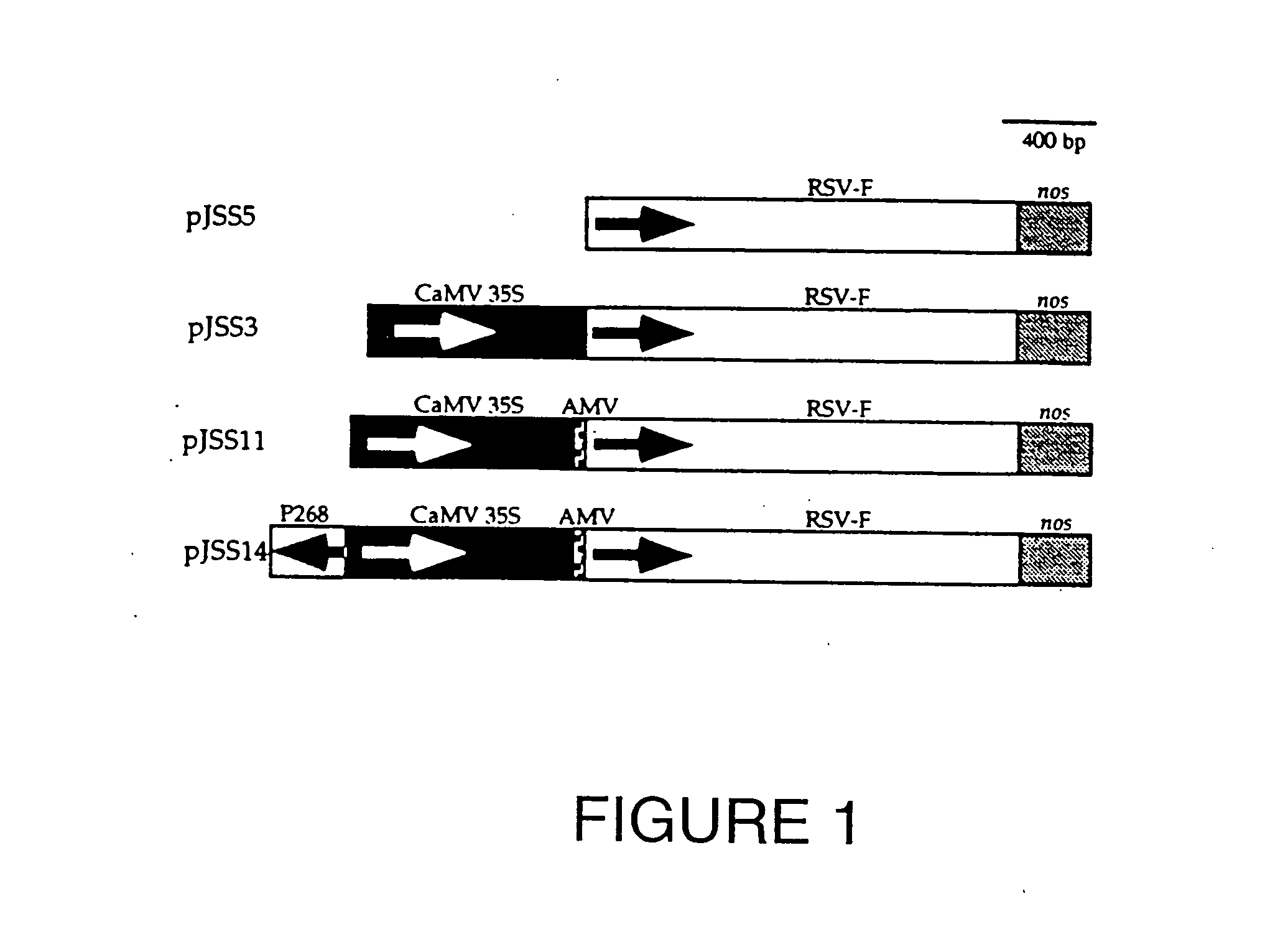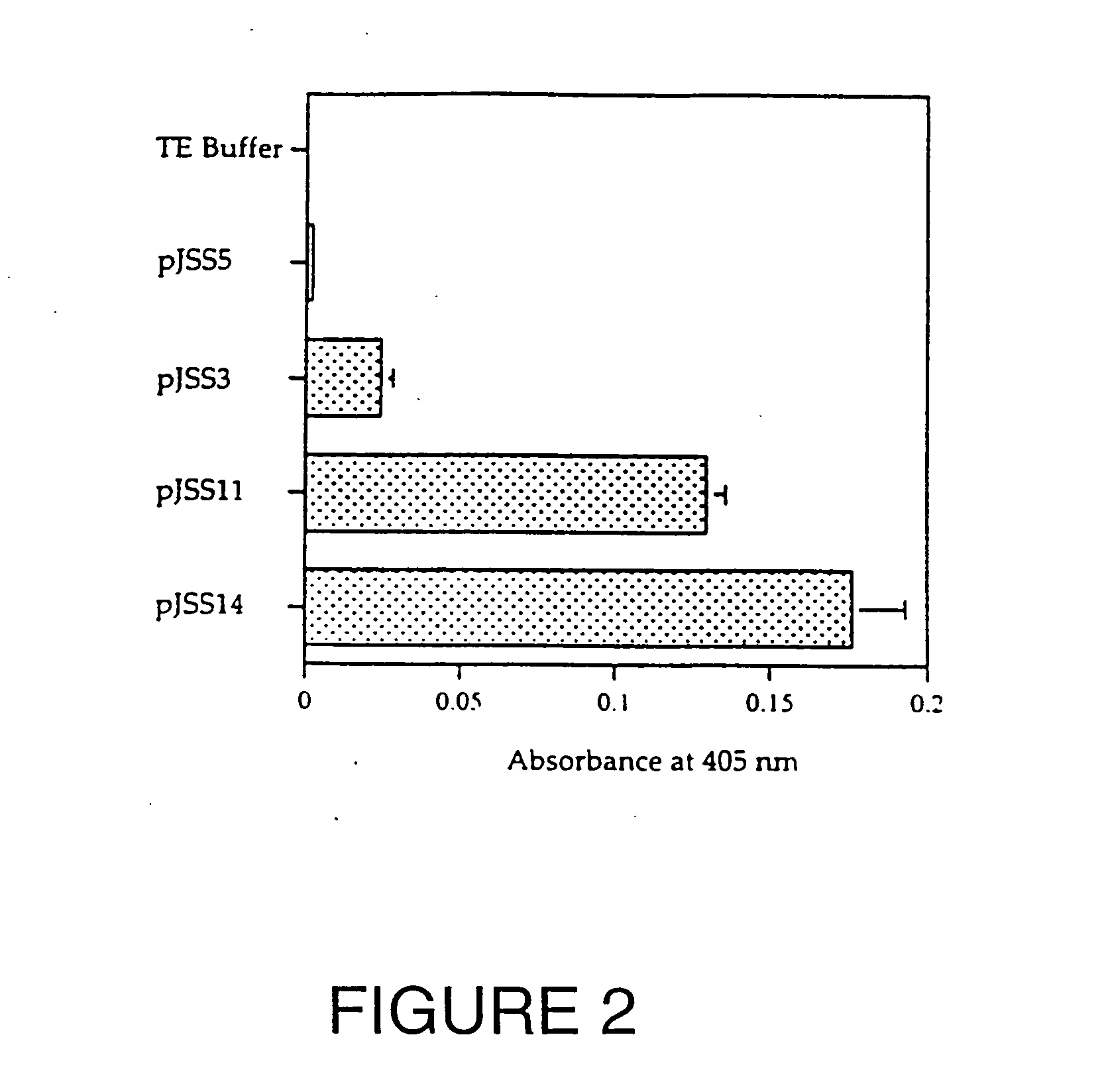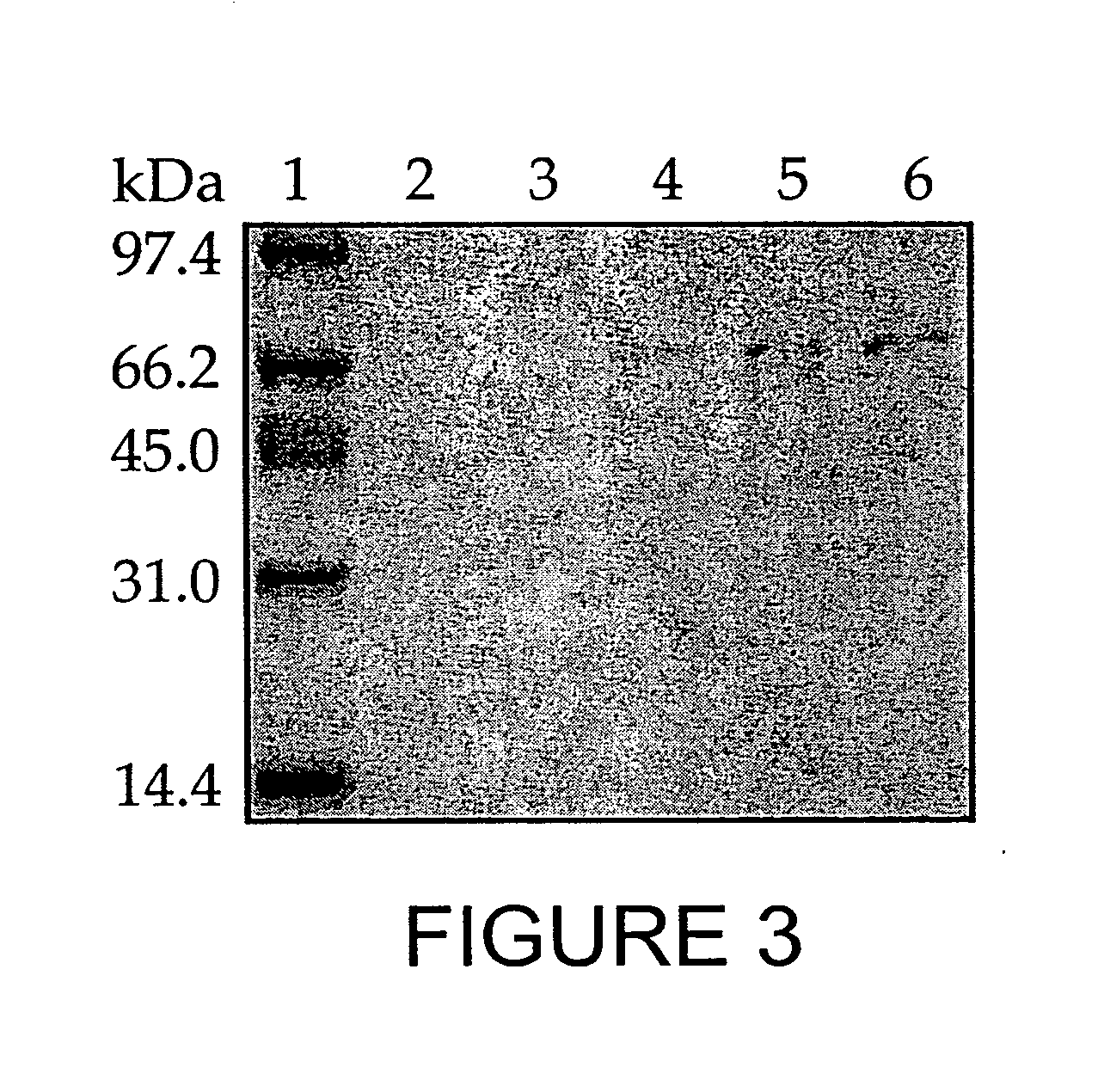Plant-derived vaccines against respiratory syncytial virus
a technology of respiratory syncytial virus and plant-derived vaccines, which is applied in the field of vaccines against respiratory syncytial virus (rsv), can solve the problems of limited immunity, limitations of such approaches, and natural infection confer, and achieve the effect of enhancing antibody production
- Summary
- Abstract
- Description
- Claims
- Application Information
AI Technical Summary
Problems solved by technology
Method used
Image
Examples
example 1
Results and Discussion for Example 1
[0114] A series of chimeric nucleic acid constructs were generated by fusing an AMV RNA4 leader and an enhancer (P268) to the CaMV 35S promoter driving the expression of the RSV-F gene (FIG. 1). The recombinant RSV-F gene expression was analyzed by ELISA following PEG-mediated transfection of apple leaf mesophyll protoplasts.
[0115] A trace amount of non-specific antibody binding was observed in protoplasts transfected with the TE buffer in the absence of DNA. To analyze the results, the absorbence in protoplasts transfected with chimeric gene constructs was compared to that of the promoterless control (pJSS5) after subtracting the absorbence of the protoplasts transfected with the TE buffer. Protoplasts transfected with the promoterless RSV-F construct (pJSS5) produced a low level of RSV-F antigen (A405nm=0.002±0.001) (FIG. 2).
[0116] The mean A405nm value from protoplasts transfected with the plasmid containing the RSV-F gene inserted downstream...
example 2
Results and Discussion for Example 2
[0126] Generation of transgenic tomato plants producing RSV-F antigen. The human RSV gene encoding the F protein was placed under the transcriptional control of either the constitutively expressed CaMV 35S promoter (37) or the fruit specific E8 promoter (38) to make chimeric gene constructs pJSS3 and pJSS4 (FIG. 4). Through Agrobacterium-mediated transformation, 30 independent transgenic tomato plants were generated with each construct and confirmed by Southern blotting (data not shown). ELISA analysis demonstrated that recombinant RSV-F antigen was expressed in the tomato plant cells. Sixteen transgenic plants containing pJSS3 and 19 containing pJSS4 expressed the RSV-F antigen at levels ranging from 1.0 to 32.5 μg / g of fruit fresh weight. The amount of RSV-F in the plant tissue varied among different transgenic lines; however, the average level in transgenic plants containing the E8 and CaMV 35S promoters was similar, 12.68±2.55 and 9.01±1.87 μg...
PUM
| Property | Measurement | Unit |
|---|---|---|
| body weight | aaaaa | aaaaa |
| body weight | aaaaa | aaaaa |
| pH | aaaaa | aaaaa |
Abstract
Description
Claims
Application Information
 Login to View More
Login to View More - R&D
- Intellectual Property
- Life Sciences
- Materials
- Tech Scout
- Unparalleled Data Quality
- Higher Quality Content
- 60% Fewer Hallucinations
Browse by: Latest US Patents, China's latest patents, Technical Efficacy Thesaurus, Application Domain, Technology Topic, Popular Technical Reports.
© 2025 PatSnap. All rights reserved.Legal|Privacy policy|Modern Slavery Act Transparency Statement|Sitemap|About US| Contact US: help@patsnap.com



